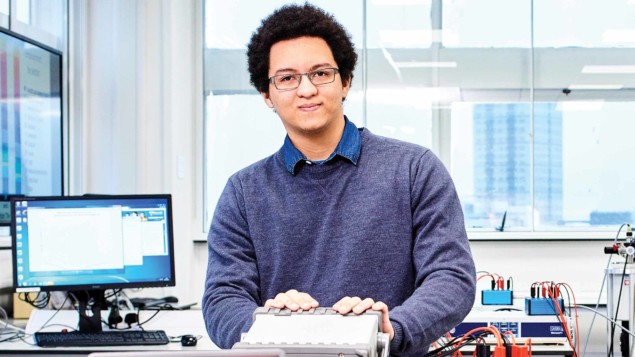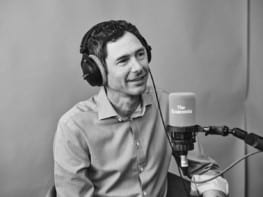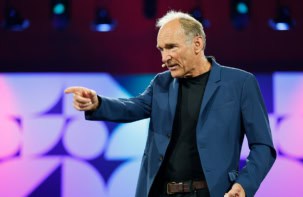With the first physics students in a decade graduating from Newcastle University this month, Nick Parker and Angela Dyson reflect on what it takes to rebuild and reopen a physics department

Physics has played an integral part at Newcastle University ever since the institution was founded in 1963 via an act of parliament. The university itself can trace its roots back to the early 1870s, when the demands of the north-east industrial sector led to the creation of the College of Physical Sciences. It was merged with the School of Medicine and Surgery in 1937 to become Kings College of Durham University, which then evolved into Newcastle University.
The present institution and its forerunners have been especially renowned for their research into geophysics. In 1926, for example, Sir Harold Jeffreys discovered that the Earth’s planetary core was liquid, while in the 1960s Keith Runcorn used the most precise magnetometers at that time to make pioneering measurements of magnetism in rock to confirm the existence of continental drift and plate tectonics.
Physics in decline
In 2004, however, Newcastle University hit the headlines for all the wrong reasons. Back then, the numbers of students taking physics had been falling for a decade, with a third of UK physics departments having closed. On top of this came the 2001 Research Assessment Exercise, which judged research in UK university departments on a scale from 1 to 5*. Physics at Newcastle had scored four, an average rather than a terrible mark, but when the government chose to direct most of the funding into the powerhouses ranked 5* and 5, it proved the final blow. Various rescue options were floated such as a massive investment in physics or moving Newcastle physicists down the road to Durham. However, when those options fell through, the decision was made to close the physics department.
Newcastle was not alone. University departments in physics or related physical-science subjects closed or merged with other departments at Dundee, Exeter, Keele, Kings College London, Queen Mary, Reading, Sussex and Swansea. In Scotland, physics departments joined forces to form the Scottish Universities Physics Alliance to tackle such pressures. The shock waves sent through the sector then led to calls to protect core science disciplines, and the government soon placed physics on a list of subjects of “national strategic importance”. But for Newcastle and these other institutions, the initiative came too late.
Thankfully, the start of the next decade saw a surge in popular interest in physics due in part to prominent media coverage, and physics appeared to be emerging from the doldrums and getting back on track. It had re-entered the top 10 most popular subjects for 16- to 18-year-olds in the UK and undergraduate numbers started to climb back up. The increase in tuition fees of up to £9250 per year also helped by leading students to choose courses that were more likely to get them a good job. The motivation to restart physics at Newcastle was clear and met with great excitement from physicists around the university.
The department was thus reopened in 2015 by theoretical physicist and best-selling author Paul Davies, who himself had worked at the university from 1980 before moving to Australia in 1990. The first cohort comprised 39 students, exceeding all expectations, and over the past three years the intake has grown to 55 per year.
Of the 39 students in that first physics cohort, 17 will leave this month with a bachelor’s degree while the remaining students will continue on a four-year MPhys course. For the graduating students, this momentous occasion marks the culmination of their three-year journey of intellectual discovery and personal achievement, and the start of a variety of new adventures.
For example, Victoria Atkinson, who started her physics studies at Newcastle following a degree in French, has secured a place at the Diamond Science and Technology Centre for Doctoral Training at Warwick University. After completing her Master’s there, she will return to Newcastle to start a PhD. Meanwhile, Josh Larue (pictured), won a government scholarship from his home country of the Seychelles to study physics at Newcastle. After a period back home, he hopes to return to Newcastle one day for further study.
Starting a physics programme and department is no easy task. The previous infrastructure had long since been mothballed and many of the personnel had moved on. The exile from student and research league tables, which continues to date, posed challenges for recruitment and funding. Undaunted by these issues, the university pushed ahead with a sizeable initial investment of four academic positions and £2m for teaching laboratories and study space.
While the physics PhD programme had continued even when the department itself had shut, it had only a handful of students. The aim is to grow this cohort to around 60 graduate students over the coming decade. It is also expected that the number of staff teaching physics, which is currently around 20, will more than double.
Starting from scratch
The restart also created a unique opportunity to design a modern, progressive and robust department. A culture of diversity and widening participation has been embedded from the start, with outreach and recruitment targeting underrepresented groups of students and the academic staff who act as their role models. A designer portfolio of research areas is being created, balancing fundamental and traditional subjects such as astronomy and cosmology, with emerging areas such as photonics and biophysics. This not only provides students with a disciplinary core but also the potential to tackle current and future challenges.
Learning lessons from the past, the investment in academic staff and research infrastructure will continue over the next decade to ensure the critical mass to weather any future storms that may arise.



